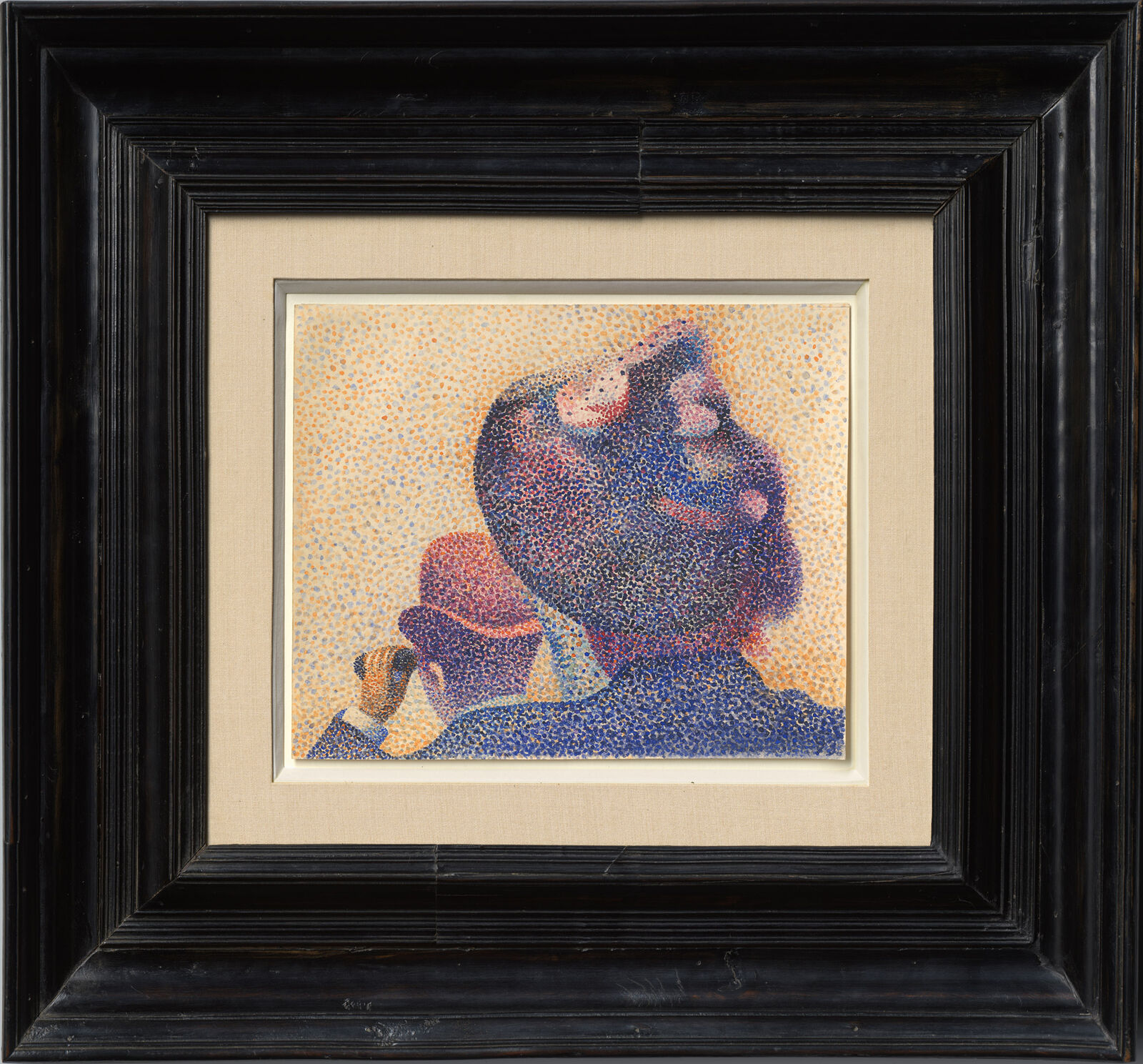Henri-Edmond Cross
Watercolor after "Bullfight", 1893
On view
3 further works by Cross
Copy link
Watercolor on paper, 19,4 x 23,8 cm
Unsigned, dated lower right: 93
Inv.-no. MB-Cro-02
In this watercolor Cross returned to the motif of his earlier painting Bullfight in an even tighter close-up. Although the Pointillist painting is transferred to a different medium, the effect of the mosaic-like technique is retained.
Unlike the Impressionists associated with Claude Monet, the Neo-Impressionists—often known simply as the Néos—made extensive use of preparatory studies. Their paintings were created not in the open air but in the studio, and were often based on numerous preliminary studies by means of which the artists progressively developed their pictorial inventions. In the 1890s watercolors began to play a more important role in Cross’s oeuvre. Since he used the medium not only for studies but also for independent works, the status of many of his watercolors is unclear.
The work shown here was initially interpreted as a preparatory study for the painting Bullfight; when it was auctioned at Christie’s in 2016, the lot entry described it as Étude pour Scène de corrida. The corresponding painting, however, had already been exhibited at the Salon des Indépendents in 1892, a year before the watercolor was made. Accordingly, this meticulously rendered rear view of two spectators at the Gran Plaza de Toros in Paris constitutes a study (étude) executed after the oil painting had already been completed. Similar works on paper are documented for some of Cross’s other paintings from the early 1890s, including the pair The Farm, Morning (1893, Musée des Beaux-Arts, Nantes) and The Farm, Evening (1893, private collection).
By the mid-1890s at the latest, Cross seems to have given up making watercolors in the Pointillist style. Presumably he realized that the quick-drying medium of watercolor was better suited for rapidly executed compositions than the time-consuming Divisionist technique. As one of his few Pointillist watercolors, the technically brilliant Watercolor after “Bullfight” holds a special place in Cross’s oeuvre.
Daniel Zamani
Henri-Edmond Cross et le néo-impressionnisme: De Seurat à Matisse, Musée Marmottan Monet, Paris, October 20, 2011–February 19, 2012; Musée Départemental Matisse du Cateau-Cambrésis, March 10–June 10, 2012, no. 29
Neo-Impressionism and the Dream of Realities: Painting, Poetry, Music, The Phillips Collection, Washington, October 27, 2014–January 11, 2015, no. 20
Modern Art Classics: Liebermann, Munch, Nolde, Kandinsky, Museum Barberini, Potsdam, January 23–May 28, 2017
Color and Light: The Neo-Impressionist Henri-Edmond Cross, Museum Barberini, Potsdam, November 17, 2018–February 17, 2019, no. 15
Impressionism: The Hasso Plattner Collection, Museum Barberini, Potsdam, from September 5, 2020
ca.
1940, René Gas, Paris
n.d., Private
collection, Paris, inherited from the above
ca.
1980, Galerie Kashiwagi, Tokyo, acquired from the above
2002, Private
collection
February
2, 2016, Christie’s, London, lot 2, consigned by the above
Henri-Edmond Cross et le néo-impressionnisme: De Seurat à Matisse, exh. cat. Musée Marmottan Monet, Paris 2011, no. 29, p. 232, ill. p. 67
Neo-Impressionism and the Dream of Realities: Painting, Poetry, Music, exh. cat. The Phillips Collection, Washington 2014, no. 20, p. 26, ill. p. 26
Do you have suggestions or questions?
sammlung@museum-barberini.de.

